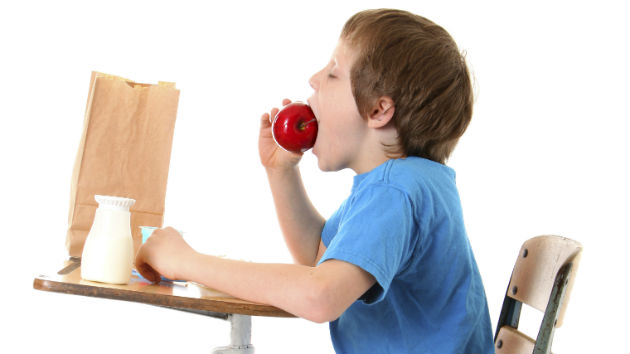For the first two years of the pandemic, there was such a thing as a free lunch—for public school kids, at least. To blunt a spike in hunger caused by job losses and school closures, the federal government made school meals free, even available as “grab and go,” for virtually all children. But Republicans blocked a renewal of the program last spring, accusing Democrats of exploiting emergency measures to enact lasting changes. “Families don’t want schools to be permanently stuck in a pandemic posture,” argued Sen. Thom Tillis (R-N.C.).
Now the fight has largely shifted to the states: California, Colorado, and Maine permanently made school food free to all students. But in most of the country, cafeterias have returned to the status quo, where kids either pay full price for lunch or get it for a reduced price or for free, depending on their families’ annual income.
For Andrea Helton, director of nutrition services for a school district in Ohio, that’s meant scrambling to sign up as many students who qualify for free or reduced lunch as possible—and raising the prices for those who don’t qualify. Some students sit in the cafeteria with no lunch and no money to buy one. It’s especially difficult for the families whose incomes are barely higher than the federal cutoff, she says: It’s “heartbreaking, because you can see that they’re really struggling, but our hands are tied.”
Meanwhile in Maine, where breakfast and lunch are still free, Jeanne Reilly, the nutrition director for the Windham Raymond School District, says it’s a relief to no longer play the role of debt collector. The district served 38 percent more meals in September than during that month in 2019, many to kids whose families make a little too much to qualify for help but need it, especially with inflating food and gas prices. Reilly has never understood why schools, which let all kids use buses, books, and even sports equipment for free, charge them to eat. “Why do we draw the line in the sand at food?”
There’s long been a debate over who bears responsibility over school lunch, says Jennifer Gaddis, author of The Labor of Lunch. During the Great Depression, the federal government started feeding students to relieve hunger and to keep farmers solvent by absorbing agricultural surpluses. In the late 1960s, a multiracial “right to lunch” movement began pushing for universal free school meals. Instead, the government focused on the neediest kids.
This had an unintended consequence: School food started to be seen as welfare. “It created the conditions for a cultural backlash against the idea of expanding the program,” Gaddis said, one propelled by the Reagan administration, which cut budgets, tightened requirements, and encouraged schools to raise prices. To economize, the programs dropped the quality of food, and millions of families that could afford to provide their own lunches opted out. Since then, school food hasn’t been able to shake the stigma, says Janet Poppendieck, a senior faculty fellow at the CUNY Urban Food Policy Institute and the author of Free for All: Fixing School Food in America. Many students avoid eating altogether rather than be seen eating “poor kids’ food,” she says.
Several school lunch directors told me this stigma shrank when all kids ate for free during the pandemic. A growing body of evidence suggests that universal free meals can do more than that. A 2019 study of New York City middle schools revealed that free school lunch led to improvements in academic performance equal to up to 10 extra weeks of learning. And a 2021 study found that schools were, overall, the healthiest place children eat—helping kids stave off chronic diseases like diabetes and heart disease.
Such evidence helps build the case for a paradigm shift, Poppendieck argues, one that no longer centers agribusinesses or deficit hawks. The Biden administration wants to provide 9 million more children with free school meals by 2032. But parents can take things into their own hands now: If more families who don’t qualify for the program start buying school lunches, more money will flow into it, since schools get a federal subsidy for each meal served. And Gaddis says it could build political will. A diverse, grassroots movement of pro-free-lunch parents would make taking kids’ lunch money a political nightmare. The school lunch program could incentivize sustainable agriculture and help set kids up for lives free from chronic disease. But only if the public demands it.
This story was produced in collaboration with the Food & Environment Reporting Network, where Bridget Huber is a staff writer.












